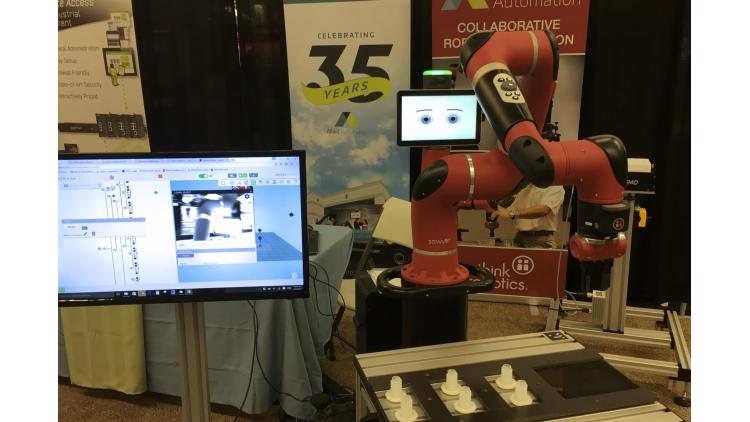Robotics experts from Omron Automation, Rockwell Automation, Universal Robots and Yaskawa Motoman share eight insights and newsy updates in the fast-changing market for cobots.
To anyone attending an industry event relating to packaging or automation over the past few years or that regularly read industry trade publications, it comes as little surprise that 2016 proved a record-busting year for robot orders and shipments.

According to a report from the Robotic Industries Association, 2016 Breaks Records for North American Robot Orders and Shipments, the food and consumer goods industry increased orders for robots by 32% in 2016. Among other functions, the robots in these industries are used to improve food safety, performing repetitive primary packaging tasks such as bin picking, tray loading and bottle handling, and assisting with secondary packaging tasks such as case packing, bundling, bagging and palletizing.
These trends and applications aligned in several conference sessions at UBM’s ADM (Advanced Design & Manufacturing) Cleveland event held in late March where presenters and panelists had plenty to say about robotics and safety specific to collaborative robots (cobots).
We present eight takeaway soundbites from a four-member-expert panel discussion moderated by Rob Spiegel, senior editor of UBM’s Design News.
1- Rethink plant layouts. “Production lines were traditionally straight lines with conveyors, but robot technology permits more flexibility for customers to split lines or even eliminate between-machine conveyors.”
— Mark Noschang, chief robotics engineer, Omron Automation and Safety
2- Collaborative workstations. “Rather than just ‘cobots,’ consider collaborative workstations that complement workers’ strengths with the repeatability of machines to optimize workflow.”
— George Schuster, TÜV-certified functional safety expert (FSExp), Certified Functional Safety Engineer (CFSE), Rockwell Automation
3- Reverse justification? “Rather than a top-down drive from management, there’s a pull from production workers who see that robotics can remove them from tiring, boring and sometimes dangerous tasks and into an opportunity for more meaningful work.”
— Keith Voz, product manager for software, Yaskawa Motoman
4- Health and foods. “Robots are now being used in the healthcare markets for physical therapy, as well as in food preparation and delivery.”
— Daniel Moore, technical and sales support, Universal Robots
5- Job security. “In our 20 years of robot installations, no one has been laid off by a robot. In fact, we’re seeing more and more acceptance by operators.”
— Noschang
6- Mobility exploding. “We’re seeing an explosion in mobile robots that are mounted on an AGV (automated guided vehicle) platform.”
— Schuster
7- Youth movement. “Robotic cells are going into junior high schools as part of their STEM programs.”
— Voz
8- Collaborative machines. “Collaborative machines are deploying now that have safety technologies built-in to the motors and drives.”
— Schuster
A lively segment followed Spiegel’s open-ended question to the panel on the safety challenges of cage-free operation. Some responses:
The installations are not always cage-free. There can be hard (fencing) or soft (scanner) operation;
The system has to be safe. Companies can conduct safety assessments guided by standards for force and speed that include ISO 10218 [safety considerations for industrial robots] and ISO/TS 15066 that directly addresses cobot operations;
Go beyond the regulations: Look everywhere for cobot safety ideas, advice and best practices.
Those interested in robotics and automation can see these advancements in person at the next Advanced Design & Manufacturing (ADM) Expo, next month in Toronto, Canada, where five events—Automation Technology Expo (ATX), PACKEX, PLAST-EX, Design & Manufacturing and Powder & Bulk Solids (PBS)—can be found under one roof May 16-18, 2017. For more information, visit http://admtoronto.com.





